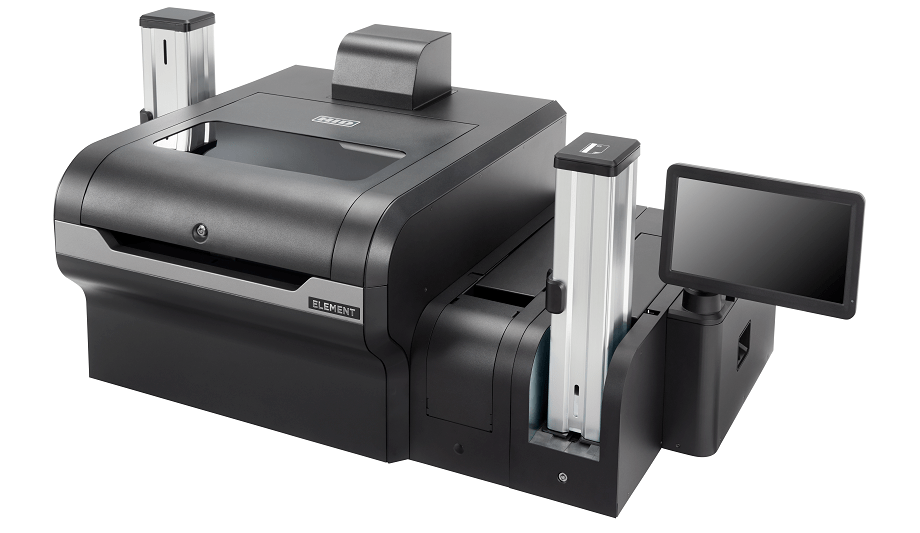HID Global launches secure ID financial card production solution | Security News
5 min read
Be our guest: How to manage visitors with both safety and service
In today’s fraught times, business continuity and success hinges on how you manage the visitors to your company. By prioritising safety and security, and coupling them with top-notch attention and customer service, you win loyalty and gain a reputation that will serve you in years to come. An excellent way to accomplish this is by identifying and implementing the best visitor management system for your company.
And visitor management systems go beyond ensuring the safety of your visitors and staff safety from your visitors. A feature-rich VMS will track your guests’ activities, so you can better understand their preferences for future visits. That way, you can manage visitor experience and tailor amenities and preferences. Both customer loyalty and brand reputation benefit.
Visitor management systems: who uses it, and why is it used?
Visitor management refers to all the processes put together by an organisation to welcome, process, and keep track
Visitor management refers to all the processes put together by an organisation to welcome, process, and keep track of all the guests daily. A visitor management system (VMS) is the technology used to manage guests for their convenience, safety, and security. Several features are typical in today’s applications. They include preregistration tools, video intercoms, self-check-in stations, and health screening.
In visitor management, the term “visitor” doesn’t only refer to guests but also anyone without an authorized access credential. For instance, an employee without their access credential logs in as a visitor. The same applies to a delivery man or a technician carrying out routine maintenance. A VMS helps to account for everyone within the organisation at any given time.
Who uses visitor management systems?
You need a visitor management system to manage a school or hospital, an office, or even a residential building. Here’s why:
Visitor management system for schools: schools are among society’s most vulnerable facilities. A VMS is almost mandatory in this setting. It helps to identify visitors, detect intruders, and alert security of any unauthorised access.
Visitor management system for offices: A VMS accounts for guests at all times. They include clients, maintenance contractors, delivery men, employees without credentials, friends, and family,
Visitor management system for hospitals: access control is essential in hospitals, and managing visitors plays a major role. Hospitals offer access to pharmaceuticals, medical records, newborns, and expensive equipment. It is crucial to monitor restricted hallways and sections with video intercoms and track unauthorised persons’ movements.
Residential visitor management system: tracking people’s movement is a key VMS component. In case of a crime, knowing who had access to the building within a specific time frame can help in the investigation. Plus, tracking the activities of visitors can deter future crime.
Why is the visitor management system important?
A video intercom makes it much more difficult for a visitor to impersonate a known guest.
VMS accounts for everyone within the organisation in cases of emergency.
VMSs can prevent intruders and alert the security department of a breach.
A VMS creates a positive visitor experience, which shapes perception of the organisation.
With a trusted VMS in place, employees can focus on being productive.
Health screening gives staff peace of mind. It increases employees’ willingness to return to work in the midst of the COVID 19 pandemic.
How does a good VMS address occupant and visitor safety?
The necessary technology to ensure building safety
The best visitor management systems contain the necessary technology to ensure building safety. To maximise occupant and visitor safety, a VMS should have the following features:
Job one of a VMS is visitor identification. It also helps deter potential criminals. Some VMSs go beyond identification by running a quick check on the visitor’s ID and alerting security of any discrepancies. By identifying and proving a visitor’s identity, the VMS ensures the safety of employees and other visitors.
VMS helps with compliance
A good visitor management system helps the organisation follow regulations, such as for occupancy. In the COVID era, some states may require health screening for guests. Health screening helps protect the building’s occupants from exposure to health hazards.
Information security
VMSs also aid in information protection. It takes mere seconds for a rogue visitor to download files into a jump drive, photograph exposed blueprints, or copy customer lists. Visitor management systems restrict visitor access to parts of the building and track the whereabouts of guests.
Visitor privacy
With pen and paper systems, walking up to the receptionist often gives visitors full view of the visitors list. Visitor management systems seal that vulnerability. Visitors can check in without fear that anyone nearby can see their information.
Emergency evacuation
With a good VMS, the exact number of people within the building is always known. In the case of an emergency, first responders can use VMS data to identify everyone on site. This is a safety net for both the occupants and visitors to the organisation.
How to manage building visitors
System features depend on the purpose and setting of the VMS. Yet certain features and processes are essential.
Preauthorisation and health screening
The first step is knowing the visitors upfront. Preauthorisation allows everyone to know who is coming and when. Guests specify the time and purpose of their visits. You get to welcome and accommodate your visitors accordingly. Some systems may also be able to upload documents of interest, such as proposals, contracts, presentations, or agendas.
Health screening is critical today. It signals that the organisation cares about its guests. A visitor is more likely to visit an organisation that prioritises health and safety. Health screening is a way to protect your staff and send the right message.
Video intercom
Along with health screening, video intercom is a key element of VMSs. It enables secure video identification with remote, touchless, and COVID-safe access into buildings. Intercoms are a safe and secure way to communicate with audio and video without physical contact.
Video allows you to visually verify the visitor. The audio component enables spoken communication. Some systems even use facial recognition technology and mobile app unlock. When integrated with access control, visitor arrival is seamless.
Upgrade to touchless access
Touchless access is the safest and most secure VMS option
Touchless access is the safest and most secure VMS option. It is more sophisticated because it receives visitors without them having to lift a finger. It’s also convenient and effective.
In this time of the novel coronavirus, the demand for hands-free systems is surging. VMS has pivoted to met this demand. Many organisations are finding how touchless systems increase safety in the workplace.
Visitor logging is essential for managing guests to your building. Besides being a source for verification and data tracing, it also helps in real-time to know who signed into the building and who hasn’t signed out yet. Tracking the movement of visitors within the facility makes it clear where they are at all times. This way, there can be an effective emergency action plan for visitors and other occupants. This feature has use in contact tracing, health investigations, and other investigations, such as for theft.






